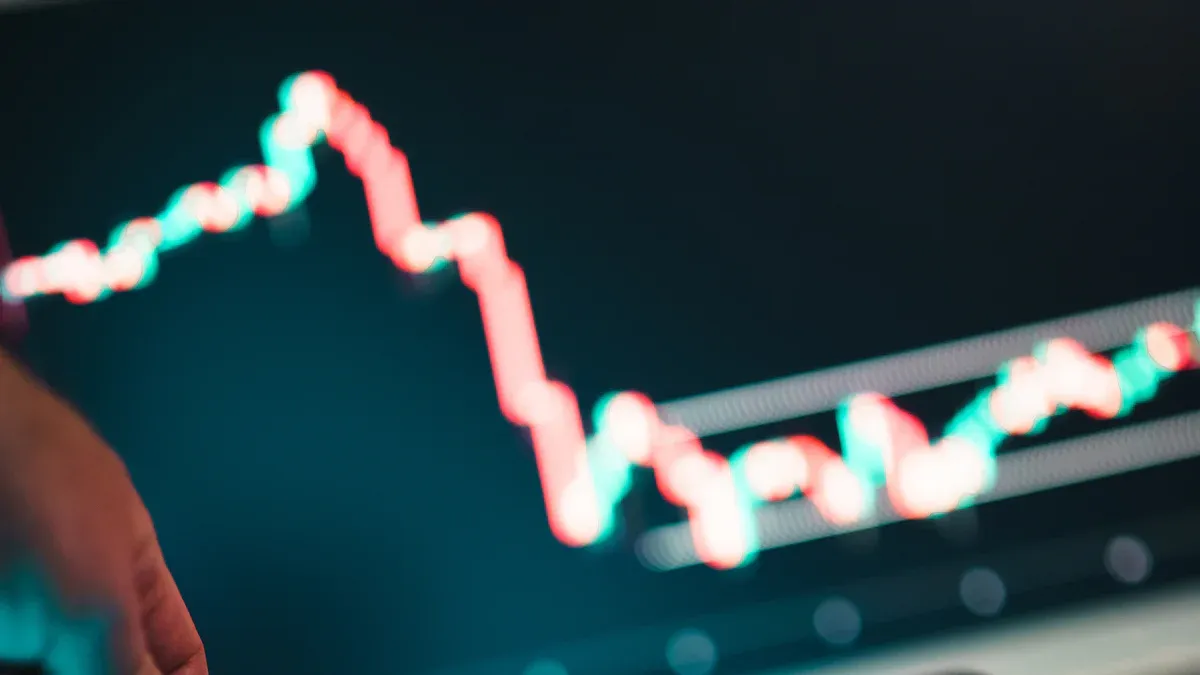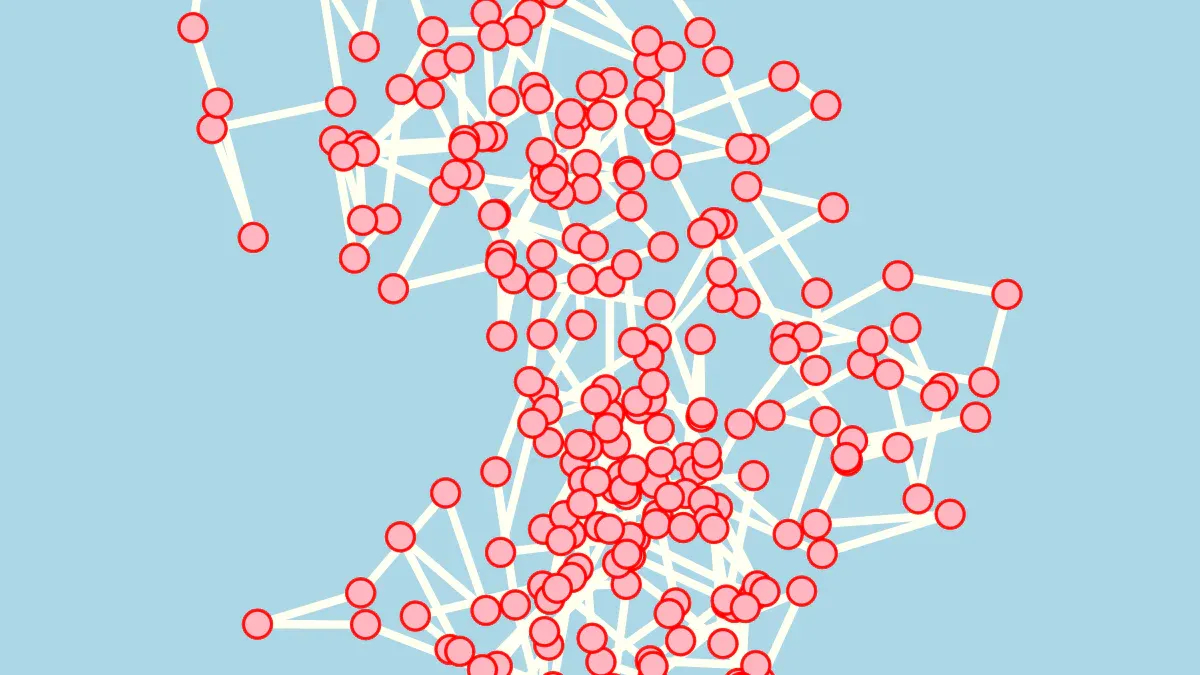
A powerful neural network analysis can predict fashion trends. Think of this ai as a super-powered trendspotter that never sleeps. It sees patterns humans might miss. This technology is not science fiction; the ai is a practical tool used today for fashion trend forecasting. It identifies emerging colors and shapes before they become popular. This ai impacts a massive and growing market.
| Metric | Value |
|---|---|
| Market Size (2024) | USD 1,079.60 billion |
| Projected Market Size (2032) | USD 1,876.72 billion |
| CAGR (2025-2032) | 7.33% |
Decoding AI Trendspotting

An AI model's predictions are only as good as its data. The system requires a massive and diverse diet of digital information to function effectively. This process of machine learning in fashion creates a powerful analytical engine.
The Data Fueling the Predictions
The AI gathers information from many online sources. It continuously monitors social media platforms, blogs, and e-commerce sites. This constant stream of information provides the raw material for analysis.
- Image Recognition: The AI analyzes millions of images from runways and social media. It identifies popular colors, emerging silhouettes, and unique patterns.
- Sentiment Analysis: The system processes text from customer reviews and online discussions. It gauges public feeling toward specific styles or materials.
- Social Listening: The AI tracks hashtags and influencer content. This helps uncover micro-trends before they become mainstream.
This comprehensive market trend analysis gives brands valuable data-driven insights. Competitor benchmarking is another key data source. It involves comparing product offerings and marketing campaigns to find new opportunities.
AI vs. Traditional Forecasting
AI-powered forecasting offers significant advantages over older methods. Traditional forecasting relies on expert intuition and runway shows. These methods are often slow and subjective. They struggle with the fast pace of modern trends. A neural network analysis provides a more objective and faster alternative. The AI can spot shifts in consumer taste in real time. This capability gives brands a crucial head start. The use of machine learning in fashion is changing the industry.
Note: The key difference lies in speed and scope. AI processes vast, real-time data from global sources, while traditional methods are limited to slower, more localized information channels.
| Feature | AI Forecasting | Traditional Forecasting |
|---|---|---|
| Data Sources | Social media, e-commerce, blogs | Runways, trade shows, past sales |
| Speed | Real-time and predictive | Slow and reactive |
| Accuracy | Data-backed and precise | Subjective and less precise |
| Scope | Global, influencer-driven trends | Designer and industry-led trends |
The Process of Neural Network Analysis

A neural network analysis transforms raw data into clear predictions. The process involves three key stages. It starts with gathering vast amounts of digital information. Next, the system learns from this data. Finally, it uses that knowledge to forecast what comes next. This methodical approach is the engine behind machine learning in fashion.
Gathering Raw Data and Digital Clues
The first step is to collect a massive volume of digital clues. The ai scans the internet for images and text related to fashion accessories. This creates a rich dataset for a complete market trend analysis. Key sources include:
- Social Media Platforms: The system monitors platforms where trends are born. TikTok and Instagram are especially important. Younger users on these platforms often adopt new aesthetics first, providing early signals.
- Influencer Content: The ai follows fashion-forward influencers and experts. These individuals are crucial for spotting trends at different stages of popularity.
- E-commerce and Runway Sites: The system gathers product details, new arrivals, and best-seller lists from online stores and official runway galleries.
Web scraping technology makes this large-scale collection possible. It acts like a digital assistant that browses millions of web pages. The technology intelligently extracts specific information, such as product descriptions, prices, and customer reviews, and converts it into a structured, usable format.
Training the AI Model with Supervised Learning
After gathering data, the training phase begins. This stage uses a method called supervised learning. Think of it like teaching a student with a textbook and an answer key. The ai is given historical data that is already labeled with outcomes. For example, an image of a handbag is paired with data on its sales volume and resale value.
The model learns to connect visual features with popularity. It also learns from text using Natural Language Processing (NLP). This technology powers customer sentiment analysis. NLP algorithms read product reviews, blog posts, and social media comments. They categorize the text as positive, negative, or neutral. This customer sentiment analysis reveals public opinion on everything from material quality to overall style.
A thorough customer sentiment analysis helps the model understand why a trend succeeds or fails.
- Positive Feedback: The ai identifies features customers love, like high-quality materials or a unique design.
- Negative Feedback: It pinpoints problems, such as poor durability or a high price point, that hurt an accessory's popularity.
- New Opportunities: The system detects suggestions for new colors, sizes, or styles directly from consumer conversations.
This detailed customer sentiment analysis provides deep insights. The model learns which attributes receive positive reactions. This customer sentiment analysis is vital for accurate predictions. The entire neural network analysis depends on this training.
Forecasting Future Trends
Once trained, the ai is ready to predict fashion trends. It applies its knowledge to new, real-time data streaming in from social media and online stores. The system uses sophisticated trend analysis algorithms to spot accelerating patterns. It can identify a specific color, shape, or material that is gaining traction faster than others.
The model employs advanced predictive analytics techniques, including time-series analysis. This allows the ai to look at data over time to forecast future demand spikes. For example, it can analyze seasonal patterns to predict a surge in demand for a particular style. Some of the powerful techniques used include:
| Technique | Purpose |
|---|---|
| ARIMA Models | Analyzes past data to understand trends and make future forecasts. |
| Exponential Smoothing | Gives more weight to recent data when making predictions. |
| Prophet | A tool developed by Facebook to handle seasonal data with accuracy. |
By combining these methods, the system moves beyond simple observation. It projects the future popularity of an accessory with a high degree of confidence. This is how machine learning in fashion gives brands a data-supported advantage in a competitive market.
Real-World Impact and Future Applications
Neural network analysis provides more than just interesting data. It offers clear, actionable steps for brands. These insights are already changing how companies manage inventory, design products, and connect with customers. The technology is shaping a smarter and more responsive fashion industry.
Turning Insights into Inventory
Brands use AI insights to make smarter inventory and marketing choices. An ai-powered forecasting model can predict an accessory's future popularity. This helps companies avoid overstocking unpopular items and reduces waste. Sentiment analysis also guides marketing. For example, a luxury brand discovered a rising interest in 'casual elegance' through AI. It changed its campaign from red-carpet imagery to feature on-the-go professionals. This data-driven shift improved sales.
- AI can recommend increasing stock for styles with positive online feedback.
- It can suggest marketing pivots, like focusing on a new social media platform.
- The system helps adjust pricing if a collection underperforms.
The Future of AI-Powered Design
The next frontier is AI-generated design. This process often uses Generative Adversarial Networks (GANs). A GAN has two parts: a generator that creates new designs and a discriminator that judges them against real-world examples. This competition pushes the generator to create highly realistic and novel accessory concepts. This blend of technology and art is a form of data-driven creativity. Some brands already use this technology.
Adidas uses generative AI to create unique shoe designs. H&M also uses an AI to test and refine designs for its collections, gathering customer preference data before production.
Personalized Bling and Sustainable Choices
AI is also making shopping more personal and sustainable. It powers systems that deliver personalized recommendations to individual shoppers. By analyzing your browsing history and past purchases, an AI can suggest accessories that match your unique style. These personalized recommendations help you discover products you will truly love.
The same AI can identify emerging trends in sustainable fashion. It analyzes product details and consumer conversations to find popular eco-friendly materials. With consumer demand for sustainable goods growing, this capability is vital. The system can highlight accessories made from recycled materials or by ethical brands. This helps shoppers make informed, sustainable choices while getting personalized recommendations.
A neural network analysis transforms chaotic online data into clear trend forecasts. This technology helps the industry move beyond intuition. Brands can now make creative decisions supported by data. The use of ai reduces overproduction, which can account for 20-30% of unsold inventory.
This shift leads to a smarter fashion industry. It becomes more sustainable by reducing waste and more responsive to what customers truly want. This creates a powerful connection between brands and consumers.
FAQ
How does an AI know what is fashionable?
An AI learns fashion trends by studying huge amounts of data. It analyzes images from social media and runways. The system also reads comments and reviews to understand public opinion. This process identifies popular styles and colors before they become mainstream.
Will AI replace human fashion designers?
AI will likely not replace human designers. Instead, it acts as a powerful tool. The technology provides data-driven insights. Designers use these insights to support their creative choices and make more informed decisions.
Can the AI's predictions be wrong?
Yes, AI predictions can be incorrect. The forecasts depend on historical and current data. An unexpected cultural event or a sudden shift in taste can lead to inaccurate predictions. The system is a guide, not a guarantee of future success.
How does AI help with sustainability? ♻️
AI promotes sustainability by improving demand forecasts. This helps brands reduce waste from overproduction. The system also supports eco-friendly choices in two key ways:
- It identifies trends in sustainable materials.
- It helps companies meet consumer demand for ethical products.
See Also
Machine Learning's Role in Forecasting Fashion Trends and Elevating Sales
Artificial Intelligence Navigates Viral Trends Within the Fast Fashion Industry
Anticipating Future Demand: AI and Data-Driven Insights for 2025
Optimizing Retail Inventory: Predictive Analytics Strategies for Re-stocking in 2025
Leveraging Predictive Models for Future Success in Fashion Retail by 2025